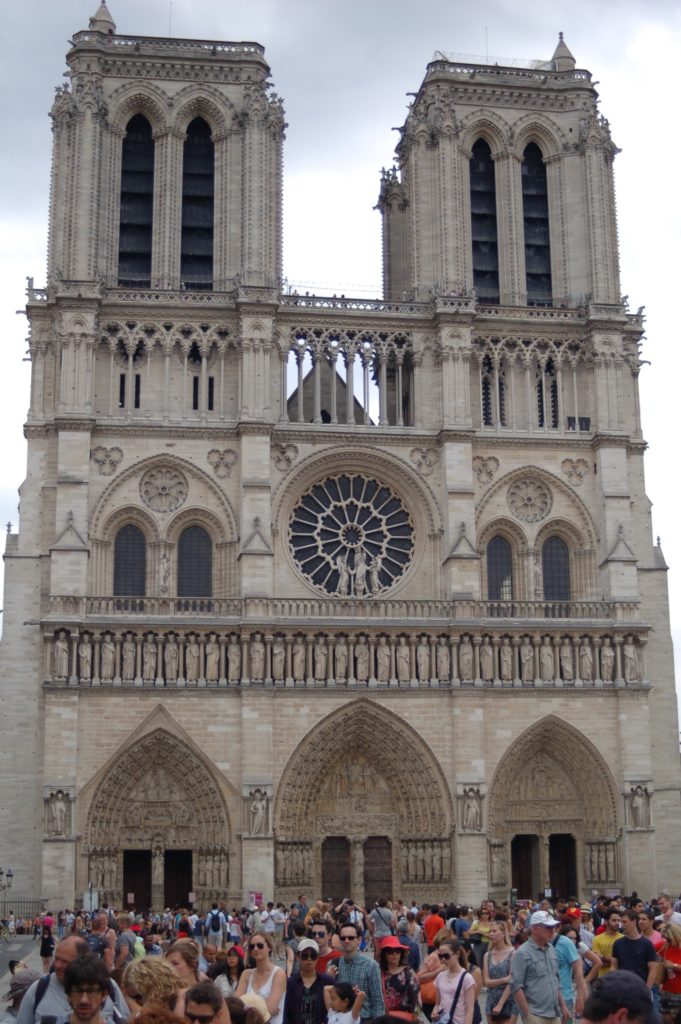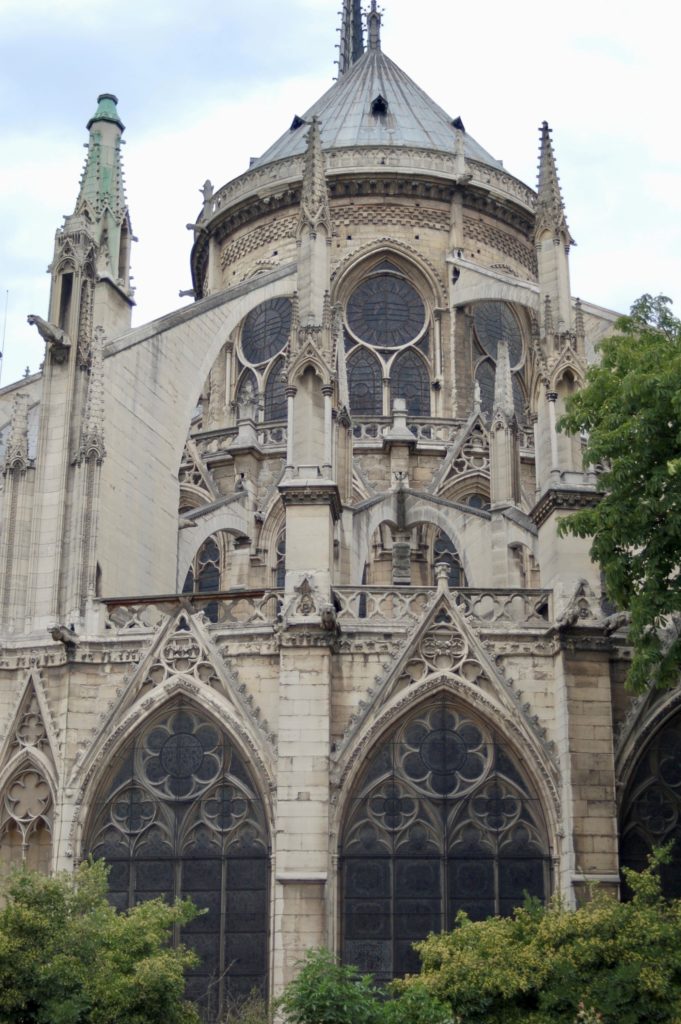On April 15, 2019, the world watched in shock as a fire tore through Notre Dame Cathedral in Paris. After burning steadily for ninety minutes, the central spire snapped in half and collapsed, taking much of the nave’s lead roof along with it. After the fire, many, including French president Emmanuel Macron, called for the cathedral’s restoration to include some modern touches. Both the diocese of Paris and the National Heritage and Architecture Commission approved the complete restoration plans late last week, much to the chagrin of traditionalists in France and across the world. While the plans would not include any significant alterations to the structure itself, the new additions will not go unnoticed. Macron expressly indicated that perhaps a new spire of a more modern design would be a refreshing addition to the Paris skyline. This idea is not part of the latest restoration plans since it was abandoned after objections were immediately raised. However, the plans do include a new lighting system so visitors can better see the artwork and inscribed Bible verses on the interior walls. Also, the church’s confessionals and tabernacle will be removed or rearranged. This way, visitors can enter the church through the front rather than the side, while also making more room inside the cathedral. One of the main goals of the modernization efforts seems clear: accommodation. Notre Dame receives over 12 million visitors every year, and the centuries-old structure can only take so much. According to the current timeline, the restoration efforts will be completed in time for the 2024 Paris Olympics. Others are not as hopeful, predicting that it could take much longer, possibly decades.
The new plans, however, have received their fair share of criticism. An open letter in the French conservative newspaper Le Figaro claims that the diocese of Paris “wants to take advantage of the restoration project to transform the interior of Notre-Dame into a project that completely distorts the decor and the liturgical space.” Jonathan Bouquet, a contributor for The Guardian, referred to the renovation plans as “the Disneyfication of a most noble and thrilling building”. To deflect some criticism, the cathedral’s rector Monsignor Patrick Chauvet stated, “Don’t think we’re going to make Disneyland.”
The Disney insult can conjure up possibilities of the restored church becoming commercialized or even a tacky, culturally-diluted tourist trap. But it can also recall the 1996 Disney movie The Hunchback of Notre Dame, the plot of which is often the only thing people outside of France know about the cathedral. There are some exciting ironies and caveats in bringing this up. The Disney film is based on the 1831 Victor Hugo novel Notre-Dame de Paris. When the book was first published, the cathedral had fallen into disrepair. Much of the artwork and sculpture had been stolen or desecrated. The statues above the front portals were all decapitated during the French Revolution (meant to represent kings of Judah but were mistaken for the then-hated kings of France). The church’s once off-white stone had become tarnished with soot since Paris was becoming an increasingly industrial city, with newer buildings encroaching on the preexisting Gothic architecture as well. Hugo, having a deep love for and a near-encyclopedic knowledge of medieval architecture, penned the story of Quasimodo, Esmeralda, and Frollo to hopefully draw attention to the cathedral and its plight.
The novel was a success, and only thirteen years later, King Louis Philippe appropriated over 2 million francs to restore Notre Dame. It ended up taking a total of twenty years and 12 million francs to fully restore the medieval cathedral, and controversy accompanied every change made. Under the guidance of the architect Eugène Viollet-le-Duc, the nineteenth-century restoration gave us some of Notre Dame’s defining physical features, like the 180-foot spire and many of the famous gargoyles on the western façade. Of course, at the time, traditionalists gave Viollet-le-Duc nothing but abuse. Later scholars like Daniel D. Reiff described the popular reaction as “rang[ing] from virulent condemnation to hesitant praise”.
So while today’s pessimists may seem smug with themselves at name-dropping Disney in their criticisms of the current restoration project, if they knew anything about the cathedral, they would refrain from that line of thought. Otherwise, they put themselves into the same camp as those who bashed Viollet-le-Duc for seemingly destroying the greatest symbol of French cultural heritage. In his revival of Notre Dame, Viollet-le-Duc made his philosophy of restoration known, which contradicts some of the more traditionalist arguments aired today: “To restore a building is not to preserve it, to repair or rebuild it; it is to reinstate it in a condition of completeness which could never have existed at any given time.”
So, I think the lesson to take away from this is that Hugo and Viollet-le-Duc knew that architecture executed on a mammoth scale, like at Notre Dame, is nearly always a testament to strength and stability; that these structures have witnessed terrible times yet withstood through it all. Yet they also understood that things change over time. The Notre Dame that existed before the fire was not the entirely same church that stood in the medieval period. Even the cathedral’s great savior Victor Hugo recognized that the structure has changed over time and will continue to change so it can remain standing. It is “a majestic and sublime edifice” yet has endured “the numberless degradations and mutilations which time and men have both caused the venerable monument to suffer”. With a massive fire now under its belt, Notre Dame will rise again, greater than ever, either because of or in spite of the critics.


